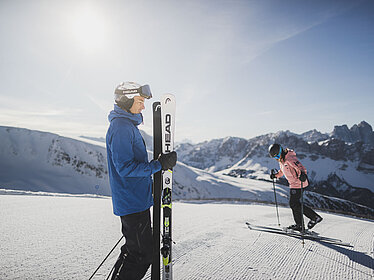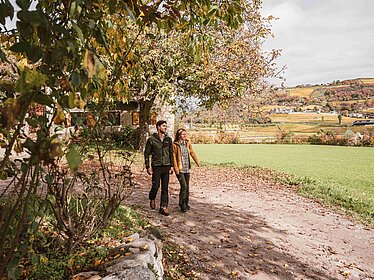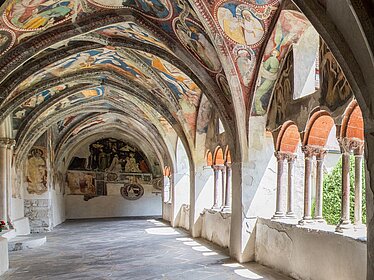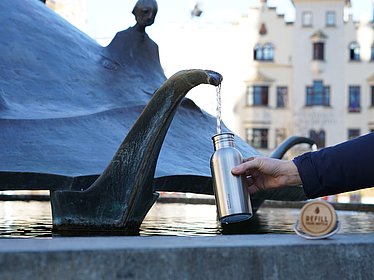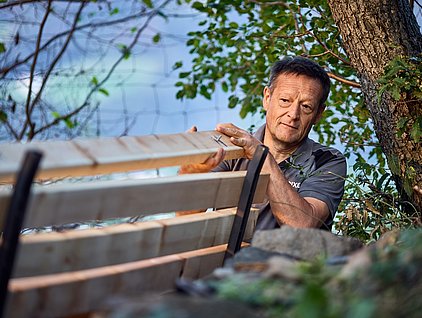Exploring the great outdoors
Urban Vibes
A feast for the senses
My holiday
Menu
Exploring the great outdoors
-
Exploring the great outdoors
- Bike
- Hiking and walking
- Skiing and winter sports
Menu
Urban Vibes
-
Urban Vibes
- Vibrant old town
- Art and culture
- Shopping
- Water
Menu
A feast for the senses
-
A feast for the senses
- White wine
- Local products
- Törggelen harvest festival
- Dining
Menu
My holiday
-
My holiday
- Brixen as a holiday destination
- Arrival and local travel
- The latest from Brixen
- Events
- Holidaying in Brixen
- Home
- Magazine Onpage Detail
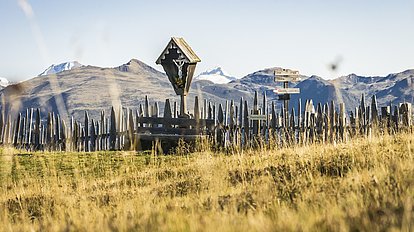
Up and away
Four days. 61 kilometres. What effect does that have on people? What makes a journey
like this so alluring? A chance to discover where a four-day hike high above civilisation can take you...
I’m on the Dolorama long-distance hiking trail in the heart of South Tyrol/Südtirol. Running past the spectacular peaks of the Dolomites, it extends from the Rodenecker-Lüsner Alm Alpine pasture to the village of Lajen. Hiking along its entire 61 kilometres takes four days and leads you high above civilisation. What effect does that have on people and what effect will it have on me? What makes a journey like this so alluring? What am I doing here?
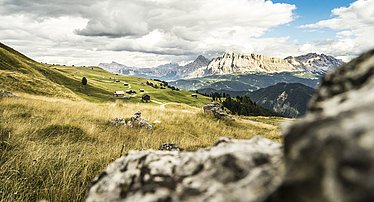
All around me, everything is calm. Without the hubbub of everyday life, all I can hear are the sounds of nature. It’s as if I’m listening to what’s going on inside myself. The sounds I make as I breathe in and out, perspiring, the crunching of stones under the soles of my hiking boots. As I set off, the chaos of everyday life still had me firmly in its grip, my mind working in overdrive. Filled with thoughts of yesterday’s deadlines and those looming over me for next week, of the last tiresome meeting at work, my hefty electricity bill and the unsettling newspaper headlines. But with every step I take, the sheer effort of climbing uphill causes these thoughts to gradually fade away. And after two or three hours, I find myself completely immersed in the beauty of nature, having left everyday life far behind. It’s like a switch has been flipped. Just like that, and all my worries are gone. Equally as sudden is the unforeseen wave of happiness washing over me, which hits me full on. From my legs, which only a moment ago felt so heavy, to my calves, just a second ago still aching – all at once everything feels so light. It’s as if I could fly away, take off from the gravel path and float up among the trees. My senses are so alive that I can taste, smell and hear the meadows and dusty stones under my feet so intensely that I’m almost at one with them.
After finishing my ascent, I continue across the ridge almost in a trance. So this is what long-distance hikers rave about, I realise in some sort of epiphany. My mind focuses solely on the bigger picture, on the beauty all around me. Everything becomes clear, everything will be okay, everything is okay.
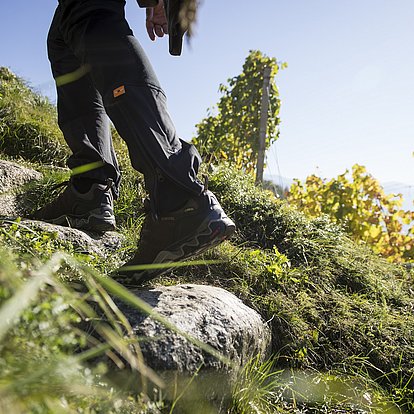
“There is one thought for the field, another for the house. I would have my thoughts, like wild apples, to be food for walkers.”
Written by 19th-century pencil maker turned author and philosopher of nature Henry David Thoreau
Mountain lodges keep popping up among the lush green grass, like small, dark splashes of paint in a watercolour landscape. I decide to take a break at one and stop for a moment to chit-chat with the landlady. But up here, people don’t talk all that much. There’s no need to among such beauty. A glance, a nod, a quick murmur of agreement or a smile often suffices. I continue on my way, soon leaving the blooming pastures behind me. The rugged rocks of the Dolomites are now towering above me, seemingly close enough to touch. Known since time immemorial as the “Pale Mountains”, these imposing, bizarre rock formations are a UNESCO World Heritage site, and it’s easy to see why. The very sight of them is so moving that I can hardly take my eyes away.
Standing in the midst of these mountains, I have a sudden sense of how small and insignificant I am – and yet I feel strong, too. And so alive. So, this is what life really amounts to, I think, realising that this new-found awareness of my insignificance in the grand scheme of things actually feels good. As I stop to take a rest, the spell is abruptly broken when my mobile phone falls out of my rucksack. I notice three missed calls and two WhatsApp messages before quickly turning it off and stuffing it back into my rucksack under my anorak. And with that, I keep on hiking. All those worries which were weighing me down yesterday or even a few hours ago have disappeared into nothing and I can see things clearly again. I look forward to taking my next step, to enjoying an evening tucking into dumplings in a cosy mountain lodge, before shivering as I get into bed, where I’ll wrap myself in a warm blanket and drift exhausted into a deep sleep. I look forward to waking in joyful anticipation of the cold, clear mountain air and to taking my first steps as the sun rises. And I even look forward – not quite yet, but at some point – to reaching my final destination, descending back into the valley and returning to civilisation. To everyday life, safe in the knowledge that after a hike like this I’ll be able to face it with a smile, at least for a few days. All the deadlines, work meetings, bills and newspaper headlines won’t seem so bad after all – with the mountains and the sense of happiness I felt still ablaze in my mind. Being up in the clouds in the heart of nature gives you an inner strength, a renewed love of life, restored energy. As a species, we have an innate need for nature, a need which runs deep in our veins, often without us even being aware of it.
Standing with my eyes fixed on the mighty Peitlerkofel and Geisler peaks, I take off my rucksack and dig out an apple. In all honesty, I’m not a huge fan of apples and I hardly ever eat them down in the valley. But it’s all I have left and so, full of a joyful exhaustion, I bite into its juicy flesh. And I suddenly feel as if I’m eating the best apple I’ve ever tasted in my life. I can’t stop thinking about a sentence written by Henry David Thoreau, that wise American itinerant philosopher I mentioned at the start. “I wish to speak a word for Nature, for absolute freedom and wildness, as contrasted with a freedom and culture merely civil – to regard man as an inhabitant, or a part and parcel of Nature, rather than a member of society.” He was right.
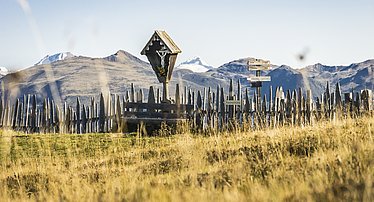
The Dolorama Track at a Glance
Divided into four one-day stages, the Dolorama Track (Dolorama-Weg) consists of easy forestry paths and hiking trails and runs from the Rodenecker-Lüsner Alm Alpine pasture via the Maurerberg mountain and the Würzjoch pass, past the Peitlerkofel and Aferer and Villnösser Geisler peaks, before finishing in the village of Lajen/Laion above Klausen/Chiusa. Instead of embarking on the full four-day hike, it is possible to complete the sections individually. The access paths and descents as well as the start and end points of each stage are all accessible by public transport. Refreshments are available from the numerous mountain lodges found along the route. We recommend booking overnight accommodation in advance.
Length: 61 kilometres
Total walking time: approx. 20 hours
Start: Zumis car park, Rodeneck/Rodengo
End: the village of Lajen/Laion
Ascent: 2,356 metres
Descent: 3,004 metres
Difficulty: ***
Text: Lenz Koppelstätter
Pictures: Dietmar Denger
Year of publication: 2020


